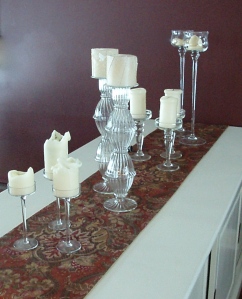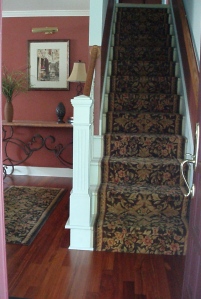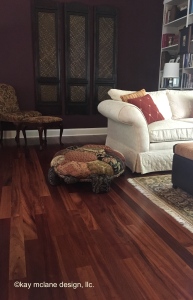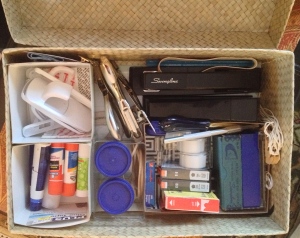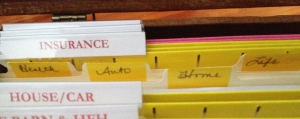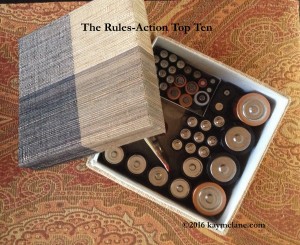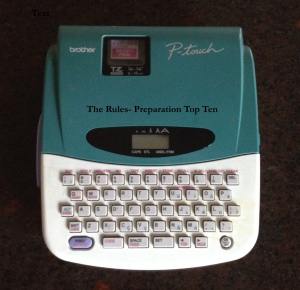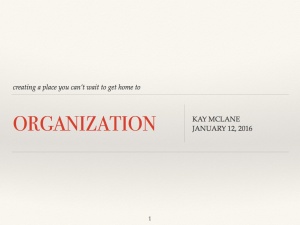Last week, I posted a five-part series on “starting the organization process”:
1. Get Ready, Get Set, Get Organized
2. Get Ready, Get Set, Get In The Game
3. Get Ready, Get Set, Get The Rules
4. Get Ready, Get set, Get Going
5. Get Ready, Get Set. Get to Enjoy Your Home!
After I completed those posts, I decided that I’d revisit the different spaces in MY home, so you get an idea of how I work with organization.
Space-by-Space
Let’s start with what I like to call “Ground Control” or “The Hub”. Think about “Ground Control” as an area with the necessary things that help you “direct” the flow of your home. It’s the place where YOUR communication (from a running a home perspective) and organization center is located. Think about it as the Johnson Space Center of your house. If you prefer the word “Hub”, that works too, because a hub is the center part of a wheel, or the point where traffic comes together and is then sent where it needs to go. Makes sense, right?
Without this key area– a space from where you run the show– organization can be really tricky!
Where ground control will physically be depends upon:
1. how many people live in your home
2. how many people “run” your home
3. what available space you have
4. where it makes sense for the way you LIVE in your house
1. If you live alone, it’s going to be much easier to choose a location. If you live with a partner, four children and an exchange student, you’re going to need to find a place that makes sense, and then “train” everyone to GO to that place for “hub” related activities.
2. If you, dear reader, are in charge of all things “ground control” related, choose a space that “works” (mentally, physically and behaviorally) for YOU. What that means is, scout out a location that doesn’t make you want to scream, or that you can’t wait to get out of! It should be a space where you feel happy, calm and organized. If both you AND someone else are involved in the actual managing of your house, you should BOTH be comfortable there.
3. This goes without saying, but you’re going to have a lot more options if you live in a huge colonial with five bedrooms, two living areas and an office, than you will in a third floor walk-up studio apartment. Interestingly, sometimes it’s actually easier to make space in a smaller space (more is not always more).
4. Regarding how you live in your home, think about it from an accessibility standpoint. A student, in a recent class, shared that she has an upstairs office where she keeps her bills. When she wants to pay bills, she goes upstairs, brings what she needs downstairs (because she prefers doing that work on the first floor) and then schleps it back up the steps when she’s done. Unless you are purposely building “stair climbing” into your days as a form of exercise, this isn’t a good use of time. She would be much better off carving out some space on her first floor to “run her home”.
So, “ground control” will be different for everyone. Some places that make sense are a kitchen (if you have desk space), an office, a library, or a first floor, unused bedroom (we never want to mix business with a room that someone sleeps in). My “Ground Control” is in the library where my desk is located.
In this space you’ll want everything that goes with “running the show”–YOUR show (not the show your best friend, neighbor or mother has).
Things that will “live” in the “Hub”:
a dedicated message center if you live with others- here you will share information or leave notes. It could be as simple as “there’s leftover lasagna in the fridge”, or as important as “I have a crisis at work, my phone’s dead so I couldn’t call you, I’m driving there now, will get in touch ASAP”.
a charging station– even if you keep you devices in the bedroom at night, it’s good to have another place where you can recharge them during the day when you’re home. (bonus- no more “calling yourself” to see where your phone is!)
bills– if you don’t have an office that you use for bill-paying; these will (eventually) be dealt with daily (we’ll talk about this when we get to “processes”) but for now, we just need them to get to the right place.
mail– same as above
calendar– (paper or electronic) that can be shared, with everyone’s schedules so that you know where everyone’s supposed to be.
binder– with plastic sleeves that holds important information: emergency contacts, medications, school calendars with information that doesn’t need to go on the Main Calendar (lunch choices, etc.), sports schedules, cleaning schedules (whether your hire this out or do it yourself), information on charities you support, school forms that are used regularly, and other data specific to your life/family
supplies–we’ll have some of these in the office (if you have one) too; envelopes, stamps, pens, pencils, markers, notepads, stapler, binder clips and other materials you use
electronics for shared use– computer, iPad, tablet, etc., etc.
batteries– in one location and easy to find
in/out box for each family member– for example, this is where you’d put a permission slip you signed for your child to go on a field trip, or a card you wanted your spouse/partner to sign
take-out menus– in one folder with pockets, arranged by type of food; each time a new menu goes in the old one (from your favorite Chinese restaurant) goes out
paper shredder– to get rid of sensitive documents
manuals binder(s)– you need to know where all your instructions are; write the model number on the front of the manual as soon as you buy something new, tear out languages you don’t need (if they’re on separate pages). Add new manuals as soon as your purchase something and remove the old manual if the item was replaced. Purge annually.
This is a great start to creating a stress free home that’s easy to run! That sounds great, doesn’t it? If you have specific questions about “Ground Control”, feel free to comment below.
Happy Organizing!
Kay
©2016 KAY MCLANE DESIGN, LLC
kaymclane.com
ps. if you’d like to get more kay mclane design posts, please click “follow”.
p.p.s. if you have friends or family members who would benefit from these posts, please pass them along. Thanks! K
-

-
separate pages for each manual
-

-
manuals separated by category
-

-
a clear “menu folder”
-
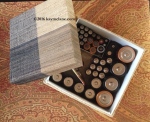
-
a specific place for batteries makes life just a bit easier
